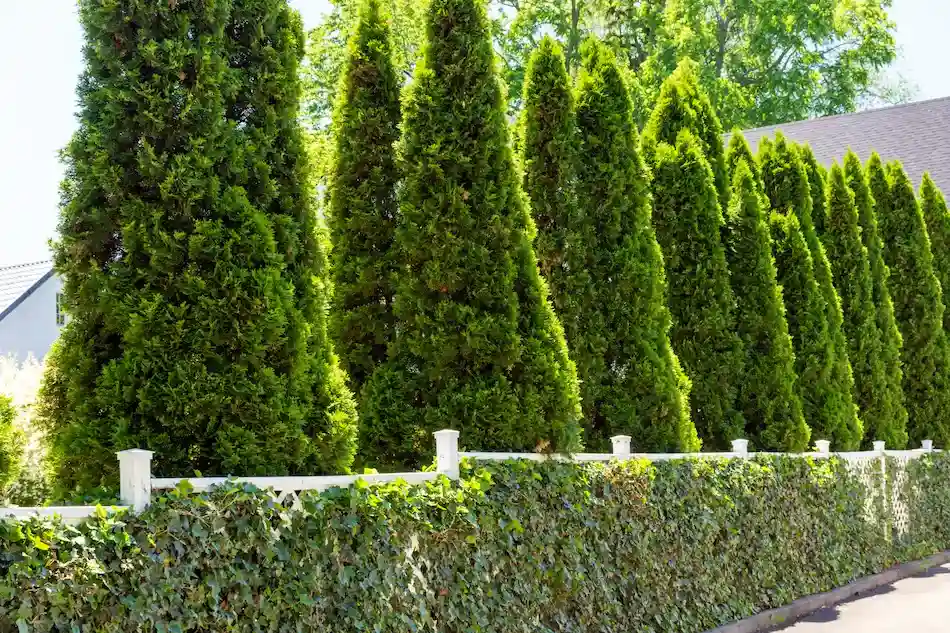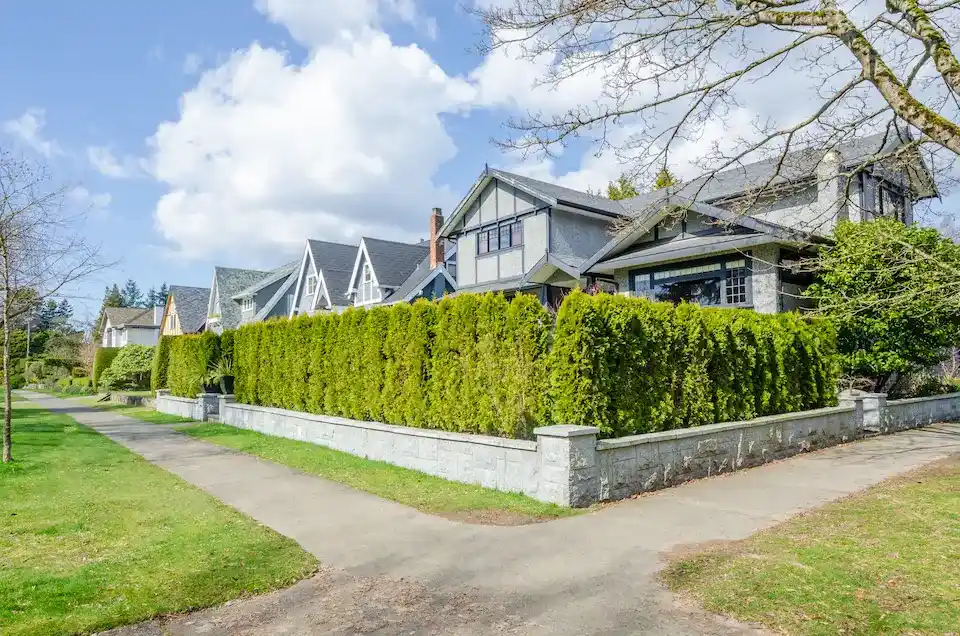In Wake Forest, where the beauty of nature is abundant, harnessing the natural elements to create privacy screens not only enhances the aesthetics of your outdoor space but also fosters a deeper connection with the surrounding environment.

Join our Wake County landscaping experts from FortSmith Landscaping as we delve into various innovative ideas and techniques to help you transform your backyard into a secluded sanctuary that complements the natural landscape of North Carolina. Whether you are looking for DIY backyard privacy ideas or considering a backyard privacy screen transformation from a professional landscape architect, we have ideas that will leave your neighbors in envy.
Understanding Your Needs and Landscape
Before diving into the process of creating natural privacy screens for your property, it’s crucial to first assess your specific needs and the unique characteristics of your outdoor space.
Before determining your privacy screening options for your backyard, do the following:
- Assess the Current Privacy Situation: Take a step back and evaluate the current level of privacy in your backyard lawn. Are there any areas where you feel exposed or overlooked? Consider factors such as neighboring properties, traffic patterns, and potential sightlines from nearby buildings or streets.
- Identify Specific Areas Requiring Privacy Screening: Pinpoint the areas of your outdoor space where privacy is most desired. This could include seating areas, dining spaces, or recreational zones that can block neighbor’s view. By prioritizing these areas, you can focus your efforts and resources on implementing effective privacy solutions where they are needed most.
- Consider Environmental Factors: Take into account environmental factors that may impact your privacy screening efforts. Factors such as sunlight exposure, prevailing wind direction, and existing landscaping features can all influence the suitability and effectiveness of different privacy solutions for your private space.
- Consider Space and Design Constraints: Evaluate the layout and size of your outdoor space, as well as any potential constraints that may affect your privacy screening options. Considerations such as available space for planting or constructing structures, existing landscape features, and zoning regulations should all be taken into account when planning your privacy solutions.
Utilizing Plants for Privacy
Plants provide an organic and dynamic way to create a natural privacy fence that blend seamlessly with the natural landscape. Unlike static structures, plants offer the added benefits of filtering air, providing habitat for wildlife, and contributing to overall environmental health. From towering trees to low-growing ground covers, there’s a wide range of plant species to choose from.
Evergreen vs. Deciduous Plants
Evergreen plants maintain their foliage throughout the year, providing consistent privacy screening regardless of the season. Popular evergreen options for a living fence privacy screen include Leyland cypress, Thuja green giants, and Holly varieties.
Deciduous plants, on the other hand, shed their leaves in the fall, allowing for increased sunlight and airflow during the winter months. Deciduous trees such as maples, oaks, and birches can provide privacy during the growing season while allowing for winter views and sunlight penetration. Additionally, they are an attractive and appealing way to implement property line dividers between your and your neighbor’s properties.

Creating Living Walls and Hedges
Living walls and hedges are excellent options for creating privacy screens, offering both functionality and aesthetic appeal. Whether you prefer the formal structure of a neatly trimmed hedge or the informal charm of a lush living wall, these plant-based solutions can provide privacy, define boundaries, and enhance the overall beauty of your outdoor space.
Designing and Planting Hedge Rows
Hedge rows are a classic and versatile option for creating natural privacy screens in your backyard. Begin by selecting suitable plant species based on factors such as desired height, density, and growth habit. Popular hedge plants for Wake Forest landscaping include boxwood, arborvitae, and privet, among others.
Consider spacing requirements and planting density to achieve the desired level of privacy and visual impact. Use stakes and string to establish straight lines and uniform spacing before planting, ensuring a cohesive and well-structured hedge row.
Using Trellises and Vines
For a more vertical privacy screen, consider incorporating trellises and vines into your landscaping design. Install sturdy trellises or lattice panels along an existing fence or wall, providing support for climbing vines such as clematis, wisteria, or climbing roses. Vining plants can quickly cover vertical surfaces, creating a lush and verdant backdrop that offers privacy while adding beauty and fragrance to your outdoor space.
Incorporating Trees for Privacy
Trees are a powerful and majestic addition to any landscape, offering not only privacy but also shade, beauty, and environmental benefits. When strategically planted, trees can create natural barriers that block unwanted views, buffer noise, and provide a sense of seclusion in your Wake Forest backyard.
Selecting Suitable Tree Species
When choosing trees for backyard privacy ideas, consider factors such as height, growth rate, canopy density, and adaptability to the Wake Forest climate and soil conditions. Evergreen trees such as Leyland cypress, Eastern red cedar, and American holly are popular choices for year-round privacy, as they maintain their foliage throughout the year.
Deciduous trees such as maples, oaks, and beeches offer seasonal variation in foliage, providing privacy during the growing season while allowing for winter views and sunlight penetration.
Building Structures for Privacy
In addition to natural elements like plants and trees, incorporating built structures into your Wake Forest landscaping can provide effective and enduring privacy solutions. From wood fencing and retaining walls to pergolas and arbors, there are various options available to suit your aesthetic preferences, functional needs, and budget.
Designing and Constructing Fences and Walls
Fences and walls are perhaps the most traditional and versatile options for creating privacy screens in residential landscapes. Choose from a wide range of materials, including natural materials like bamboo to construct a bamboo fence to complement the style of your home and surroundings.
Adding Decorative Elements
Lattice panels made from natural wood can be attached to fences or walls to create partial privacy while allowing airflow and sunlight to filter through. Pergolas and arbors provide architectural interest and support climbing plants, adding vertical dimension and greenery to your outdoor space.
Integrating Water Features and Other Natural Elements
Incorporating water features and other natural elements into your Wake Forest landscaping can not only enhance privacy but also create a soothing and serene outdoor oasis. From tranquil ponds and cascading waterfalls to rugged rock formations and lush vegetation, these elements add visual interest, mask unwanted noise, and provide a sense of tranquility and connection with nature.
Incorporating Rocks, Boulders, and Natural Barriers
Rocks and boulders are versatile elements that can be used to create natural barriers and privacy screens in your outdoor space. Arrange large rocks or boulders strategically to define boundaries, block views, and add texture and dimension to your landscape. Incorporate natural rock formations into garden beds, pathways, or seating areas to create visual interest and anchor your outdoor space in the surrounding environment.
Creating Privacy Through Landscape Design Techniques
Professional landscape design techniques such as terracing, berming, and mounding can be used to create privacy and visual interest in your backyard. Build terraced garden beds or raised planters to create layered privacy screens while maximizing planting space and adding depth to your landscape. Construct berms or mounds using soil and organic materials to create natural barriers and focal points, adding elevation and dimension to your outdoor space.
Design Your Private Backyard with Our Wake Forest Landscaping Professionals
Transform your backyard into a private sanctuary with the expertise of our Wake Forest lawn care professionals. We are here to help you design a space that not only provides the privacy you desire but also reflects your unique style and enhances your outdoor living experience. Whether you envision lush greenery, tranquil water features, or stylish built structures, our team is here to bring your vision to life.
Contact FortSmith Landscaping today to schedule a consultation by calling (919) 228-8495 or filling out the form below to get started.
